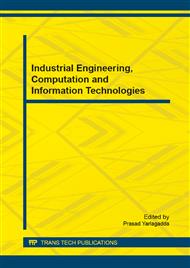p.1071
p.1077
p.1081
p.1088
p.1093
p.1098
p.1102
p.1106
p.1112
Power Efficient Port Assignment for Connection Provision in IP-over-WDM Optical Networks
Abstract:
In the IP-over-WDM networks, electric power is more consumed at IP layer. This letter proposes two power-saving dynamic connection provision algorithms, called Most Used First (MUF) and State Transmission Time Aware (STTA) respectively, which can direct the incoming connection request to already provisioned router line cards and chassis, and hence reduce the number of active IP devices so to save electric power. For a typical network, MUF and STTA can save over 3% and 7% power respectively comparing with conventional power-unaware approach.
Info:
Periodical:
Pages:
1093-1097
Citation:
Online since:
December 2014
Authors:
Keywords:
Price:
Сopyright:
© 2015 Trans Tech Publications Ltd. All Rights Reserved
Share:
Citation:


